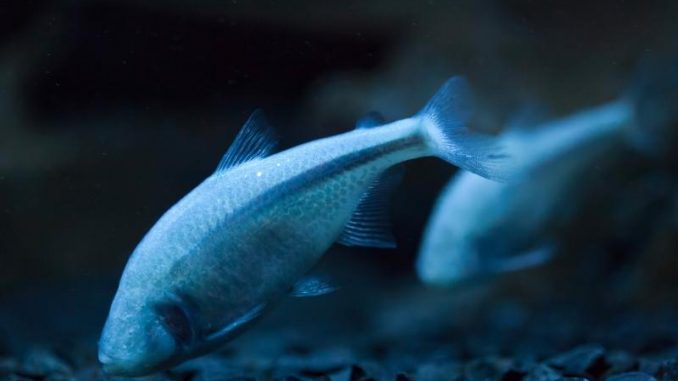
The Mexican tetra is a freshwater species of fish. Part of the Characidae family, the Mexican tetra is related to over 80 species of tetra, most of which are common aquarium fish.
Native to the Nueces and Pecos Rivers in Texas, and slow-flowing water in eastern and central Mexico, the Mexican tetra comes in two forms — cave-dwelling and surface-dwelling.
Both forms are known as blind cave fish, blind cave characin, and blind cave tetra.
Surface dwelling and cave-dwelling Mexican tetras have similar personalities with different physical appearances.
Regardless of the form you choose for your aquarium, Mexican tetras are full of personality, making them fun tank mates and a joy to observe.
TABLE OF CONTENTS
Mexican Tetra Facts & Overview
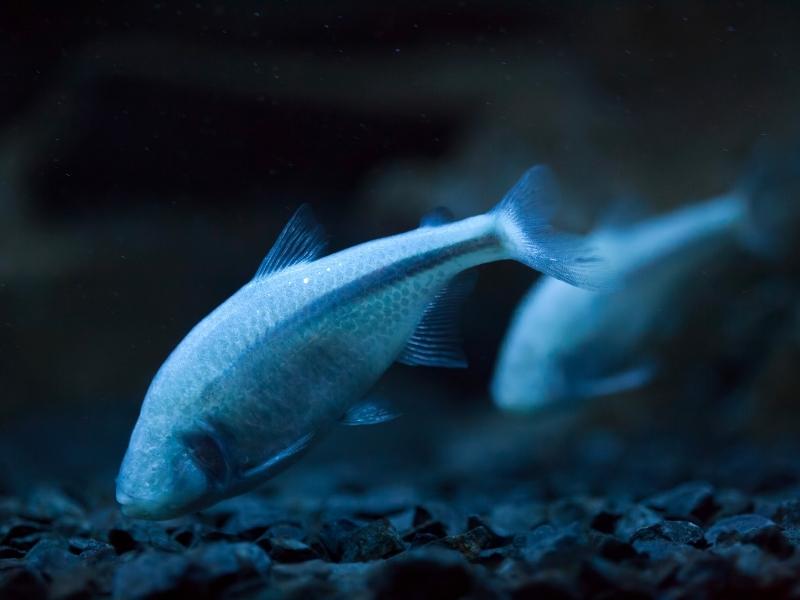
| Scientific name: | Astyanax mexicanus |
| Common names | Mexican tetra, blind cave fish, blind cave tetra |
| Distribution: | Texas and central Mexico |
| Size: | 3–5 inches |
| Life expectancy: | 4 years |
| Color: | silvery & gray, or translucent pink |
| Diet: | Carnivore |
| Temperament: | Mostly peaceful with some aggressive tendencies |
| Minimum tank size: | 20 gallons |
| Temperature: | 68–77°F (20–25°C) |
| pH: | 6.5–8.0 pH |
| Hardness: | up to 30dGH |
| Care level: | Moderate |
| Breeding: | Egg-layer |
Origin
The Mexican tetra (Astyanax mexicanus) is native to central and eastern Mexico, and rivers, ponds, creeks, and springs in Texas.
The blind cave fish and the surface fish live in clear water with a rocky environment.
Surface Mexican tetras congregate at the substrate, whereas blind cavefish live in caves.
Cave-dwelling and surface-dwelling tetras live in environments with varying natural daylight, and both fish prefer a soft sand substrate and clean water.
Mexican tetras are classified as a “least concern” species in the wild. The blind cave tetra is less common than other tetra fish species in captivity.
Adult Size & Lifespan
Adult Mexican tetras vary in size. Some adult fish grow up to 5 inches long, while others measure just 3 inches long. Size variations occur both in the wild and in captivity.
Healthy Mexican tetras live for up to five years. However, the fish only live such long lives if their tank conditions are kept stable and clean.
Most wild fish live for up to 3–4 years because they don’t have access to medication to treat disease or infection.
Availability
Mexican tetras are hard to find in pet stores and online.
Instead of buying Mexican tetras from anonymous sellers on online shopping sites, you should only buy these fish from reputable breeders like Arizona Aquatic Gardens.
Most online pet stores sell Mexican tetras for $5.99. You should be wary of breeders selling Mexican tetras for less than $5 because these tetras could be unwell, or could have been bred in unsanitary conditions.
Appearance & Behavior
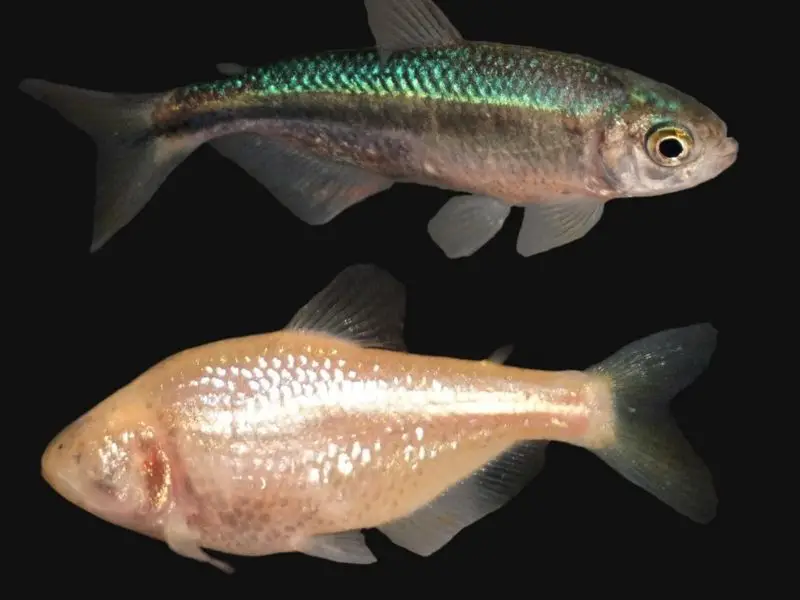
Mexican tetras come in two forms and look different from one another.
The cave-dwelling Mexican tetra doesn’t have eyes and is a translucent pale pink color, while the surface-dwelling Mexican tetra has two eyes and is a silver/gray color.
Both Mexican tetra forms grow up to five inches long in the wild and in captivity.
Female Mexican tetras have pointed ventral fins and more rounded bodies than male fish. Females are also larger than males, and look plumper than usual during breeding season, making it easy to sex fully grown Mexican tetras.
Typical Behavior
Mexican tetras are peaceful fish that spend most of their time in the mid-section of the tank.
They are usually well-behaved fish, but Mexican tetras can show aggression towards tank mates if they’re kept in small tanks with unsuitable fish. These tetras nip the fins of other tank mates and swim into other fish to show dominance.
Mexican tetras should share a tank with peaceful fish that won’t get in the tetras’ way. Look out for signs of aggression and irritation and separate the fish in the tank as soon as these behaviors occur.
Although the fish are most active during the day, Mexican usually swim around the tank in between light naps during the night too.
You should feed Mexican tetras during the day to ensure a healthy day-to-night rhythm.
Mexican Tetra Care
Mexican tetras have a moderate care level. As long as the tank is kept clean and the tetras eat a healthy, balanced diet, beginners and experts can care for them.
Mexican tetras are native to slow-flowing and highly vegetated rivers in lower Rio Grande, Pecos, and Nueces. These fish need plenty of live plants and natural accessories in their aquarium to feel comfortable.
Mexican tetras feed at the substrate in the wild and are opportunistic feeders.
The fish eat crustaceans, insects, and worms in the wild but should feed on high-quality fish food flakes and pellets in captivity.
You can also feed Mexican tetras live or freeze-dried bloodworms and mosquito larvae.
Captive-bred Mexican tetras are prone to common freshwater fish diseases and infections such as ich and skin or gill flukes. You can treat most diseases and infections with regular water changes and with antibiotics.
Disease
Stressed Mexican tetras are dull in color and often crash and bump into decorations and plants.
Another tell-tale sign that your Mexican tetra is distressed is if it rubs its body on the substrate or on rocks and gravel.
Ich is a parasitic infection that causes white spots to form all over the fish’s body and is a common Mexican tetra infection.
Another common disease is skin or gill flukes. Skin and gill flukes cause increased mucus and clamped gills, which is uncomfortable for the infected fish.
If you’re concerned that your fish has a disease or infection, perform regular partial water changes and seek medical attention if your fish doesn’t show signs of improvement within a week or so.
Quarantine new fish in a quarantine tank for three weeks before moving the fish to a community tank. This will ensure you spot diseases and infections before they spread to the fish in your community tank.
Habitat and Tank Requirements
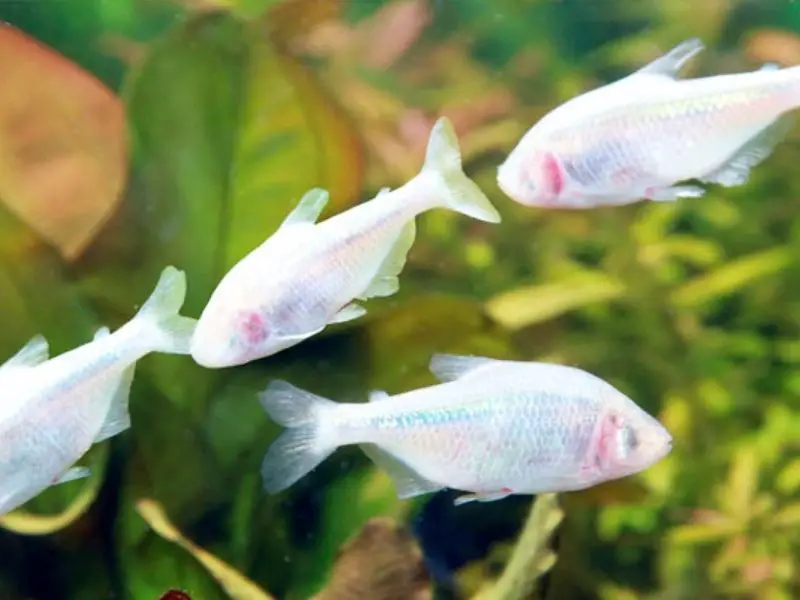
| Water type: | Freshwater |
| Tank size: | 20 gallons |
| Water temperature: | 68–77°F (20–25°C) |
| Substrate: | Sand or gravel |
| Tank setup: | Plants and caves with an open middle section |
| Acidity: | 6.5–8.0 pH |
| Water hardness: | up to 30dGH |
| Filter: | Yes, to keep the water fresh |
| Bubbler: | No, their natural environment is slow-moving water |
| Lid: | Yes |
Tank Conditions
Mexican tetras live in slow-flowing rivers and streams with sand or gravel substrate.
The water is rich with vegetation and live worms and crustaceans for the fish to feed on, and you should create a similar environment in captivity.
Mexican tetras thrive in large aquariums. Invest in a 20-gallon tank or larger to ensure your fish has enough room to swim freely in.
Although these fish are versatile and adapt to their environment, you should keep the tank’s water temperature and pH levels constant to avoid causing the fish distress.
Soft sand and gravel are the best substrates for Mexican tetra tanks. You can mix sand and gravel to make a more natural substrate, similar to the substrate found in the wild.
Decorate the aquarium with natural plants, bits of driftwood, and rocks. Make sure the middle section of the tank stays clear so that the fish can swim around the tank freely.
Because Mexican tetras live in slow-flowing water in the wild, water bubblers are not recommended in the fish’s tanks. However, you should install a high-quality water filter to keep the tank water fresh and clean.
Tank Mates
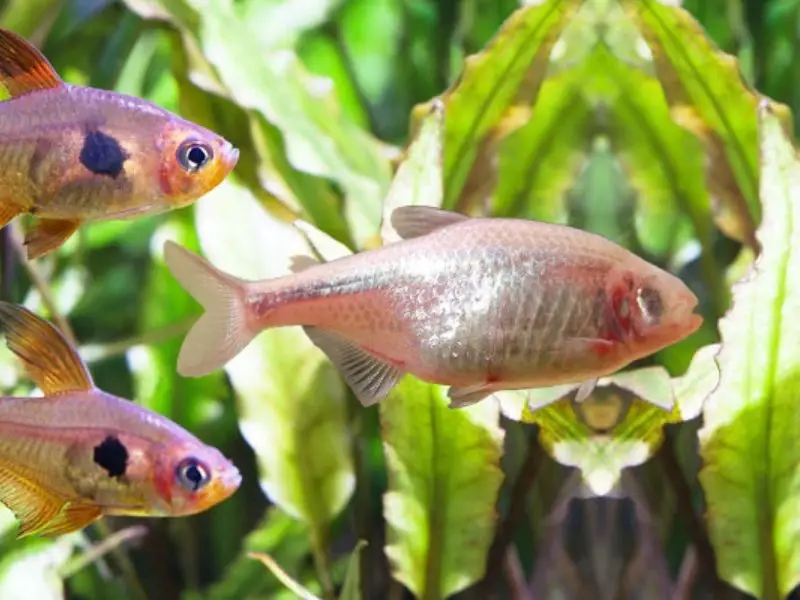
Peaceful community fish such as barbs, gouramis, and other tetra fish are great tankmates for Mexican tetras.
You should opt for tank mates that swim on the bottom or top of the tank and leave the middle of the tank free for Mexican tetras to swim in.
Non-fish tankmates are not suitable in a Mexican tetra tank. Snails, shrimps, and other crustaceans should live in a separate tank because Mexican tetras often bite and nibble on non-fish tank mates.
Diet and Feeding
Mexican tetras feed on whatever meat and vegetation are around them in the wild.
These fish are bottom feeders, which means they feed and scavenge on the substrate in the wild and in captivity.
Captive Mexican tetras should eat fish food flakes and pellets that sink to the bottom of the tank twice daily, preferably in the morning and in the evening.
You can feed your fish freeze-dried or live brine shrimp, mosquito larvae, and bloodworms two or three times per week as a treat.
Breeding
Mexican tetras are egg-laying fish. This tetra species is easy to breed, but you should invest in a separate breeding tank if you want the process to run smoothly.
Here are the steps you should take to breed Mexican tetras in captivity:
- Set up a breeding tank and decorate the tank with live plants and a sand/gravel substrate.
- Scatter large marbles all over the substrate and fit the breeding tank with a sponge filter.
- Place the breeding pair in the breeding tank and feed them high-protein foods.
- The pair will begin to spawn. The female will lay eggs for the male to fertilize, which will hatch within 24 hours.
- Remove the adults from the tank once the eggs have been laid to stop the adults from eating the eggs or the fry.
You should stop the breeding process immediately if you notice the fish biting one another or flaring their gills. This type of behavior shows that the fish is in distress.
Should You Get a Mexican Tetra for Your Aquarium?
Mexican tetras are interesting freshwater fish that make great pets for beginners and expert fishkeepers who have lots of time to care for the fish.
As long as Mexican tetras share a tank with peaceful schooling fish, there shouldn’t be a conflict between the fish in the aquarium.
Despite their territorial nature and semi-aggressive tendencies, Mexican tetras are unique aquarium fish with quirky personalities.
These fish are easy to breed and fun to watch and are entertaining aquarium fish to keep.

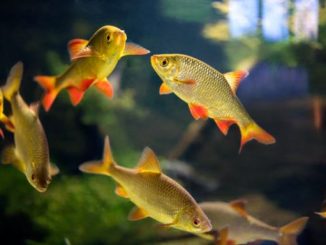
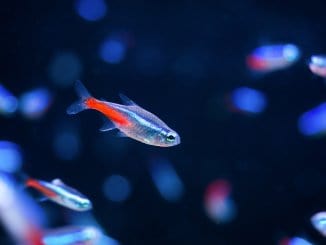
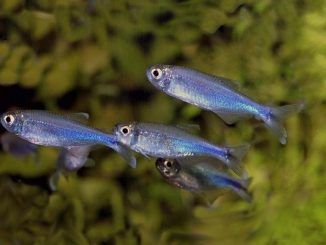
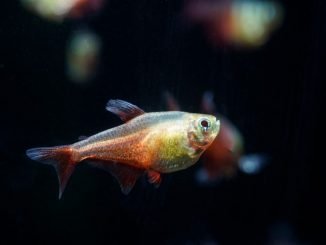
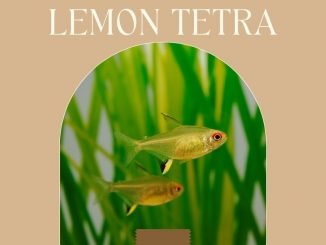
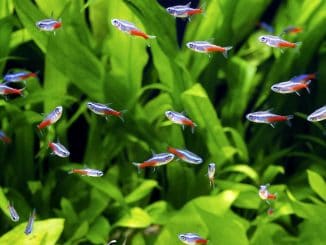
Be the first to comment